A
Auto Express
Guest
Being able to use tried and tested engines from the VW Group stable has helped the Octavia maintain its position as a dependable performer, with a focus on comfort rather than being the most dynamic car to drive.
The steering is light, but not not so much that you aren’t able to feel a level of precision to your inputs. Skoda has focused a touch more in this area, as the Octavia now features Dynamic Chassis Control, which allows the driver to adjust the damping and steering settings via the individual on-board drive modes.
Skoda has also paid attention to levels of refinement for the Octavia, with improvements in sound-deadening meaning less noise and vibration is felt through the cabin compared to the previous model.
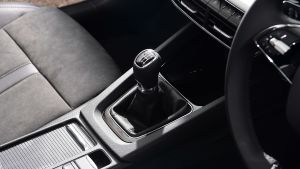
image
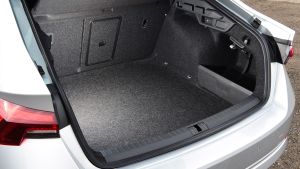
image
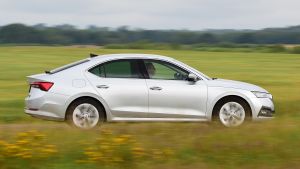
image
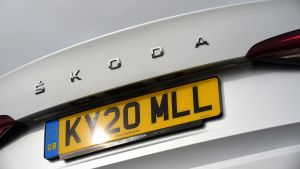
image

image
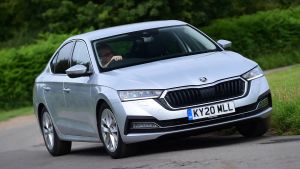
skoda octavia
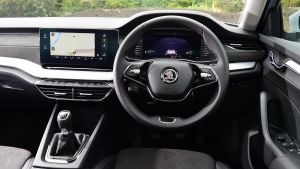
image

image
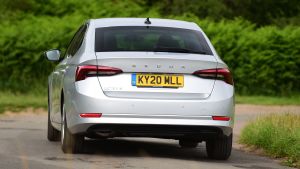
image
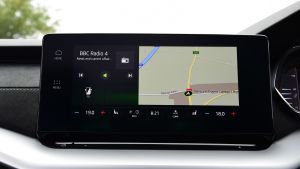
image
Petrol power comes from 1.0-litre, 1.5-litre and 2.0-litre TSI units producing 109bhp, 148bhp and 242bhp respectively. When paired with a DSG transmission, the 1.0-litre and 1.5-litre engines feature mild-hybrid technology to improve efficiency and deliver a small increase in performance.
There’s also a 2.0 TDI diesel engine with either 114bhp, 148bhp or 197bhp, although the extra available torque means all offer decent performance.
The vRS model comes with a choice of petrol, diesel and plug-in hybrid powertrains. It’s the only model to get the 242bhp 2.0-litre TSI engine, but the vRS can also be equipped with a 2.0-litre TDI producing 197bhp or a 1.4-litre plug-in hybrid developing a combined 242bhp.
The plug-in hybrid variant uses a 1.4-litre four-cylinder petrol engine and an electric motor to deliver 201bhp in SE L guise or 242bhp in the vRS.
The 1.0-litre TSI engine produces 109bhp and 200Nm of torque, resulting in a sprint from 0-62mph in 10.8 seconds and a maximum speed of 129mph. The 1.5 TSI brings 148bhp and an extra 50Nm of torque. The 0-62mph time tumbles to 8.2 seconds, while top speed is 142mph.
Those seeking a diesel option can go for the 2.0-litre TDI unit, which is available as a 114bhp/300Nm version, or a more powerful 148bhp/360Nm variant. Respective 0-62mph times of 10.3 and 8.7 seconds means there’s more than enough pace for most tastes.
Predictably, the vRS is the quickest to 62mph, completing the sprint in just 6.7 seconds when powered by a 2.0-litre TSI engine mated to a DSG transmission. The time slips to 6.8 seconds with a manual gearbox, but the 2.0-litre TDI 4x4 achieves the same time. The 2.0-litre TSI also offers the highest top speed of 155mph.
The plug-in hybrid variant offers the acceleration to rival a hot hatch, with the 201bhp version completing the 0-62mph sprint in just 7.7 seconds. The 242bhp version is even quicker, with the ability to hit 62mph in 7.3 seconds.
Continue reading...
The steering is light, but not not so much that you aren’t able to feel a level of precision to your inputs. Skoda has focused a touch more in this area, as the Octavia now features Dynamic Chassis Control, which allows the driver to adjust the damping and steering settings via the individual on-board drive modes.
Skoda has also paid attention to levels of refinement for the Octavia, with improvements in sound-deadening meaning less noise and vibration is felt through the cabin compared to the previous model.

image

image

image

image

image

skoda octavia

image

image

image

image
Petrol power comes from 1.0-litre, 1.5-litre and 2.0-litre TSI units producing 109bhp, 148bhp and 242bhp respectively. When paired with a DSG transmission, the 1.0-litre and 1.5-litre engines feature mild-hybrid technology to improve efficiency and deliver a small increase in performance.
There’s also a 2.0 TDI diesel engine with either 114bhp, 148bhp or 197bhp, although the extra available torque means all offer decent performance.
The vRS model comes with a choice of petrol, diesel and plug-in hybrid powertrains. It’s the only model to get the 242bhp 2.0-litre TSI engine, but the vRS can also be equipped with a 2.0-litre TDI producing 197bhp or a 1.4-litre plug-in hybrid developing a combined 242bhp.
The plug-in hybrid variant uses a 1.4-litre four-cylinder petrol engine and an electric motor to deliver 201bhp in SE L guise or 242bhp in the vRS.
- SEE MORE Best hot hatchbacks 2021
Engines, 0-60 acceleration and top speed
The 1.0-litre TSI engine produces 109bhp and 200Nm of torque, resulting in a sprint from 0-62mph in 10.8 seconds and a maximum speed of 129mph. The 1.5 TSI brings 148bhp and an extra 50Nm of torque. The 0-62mph time tumbles to 8.2 seconds, while top speed is 142mph.
Those seeking a diesel option can go for the 2.0-litre TDI unit, which is available as a 114bhp/300Nm version, or a more powerful 148bhp/360Nm variant. Respective 0-62mph times of 10.3 and 8.7 seconds means there’s more than enough pace for most tastes.
Predictably, the vRS is the quickest to 62mph, completing the sprint in just 6.7 seconds when powered by a 2.0-litre TSI engine mated to a DSG transmission. The time slips to 6.8 seconds with a manual gearbox, but the 2.0-litre TDI 4x4 achieves the same time. The 2.0-litre TSI also offers the highest top speed of 155mph.
The plug-in hybrid variant offers the acceleration to rival a hot hatch, with the 201bhp version completing the 0-62mph sprint in just 7.7 seconds. The 242bhp version is even quicker, with the ability to hit 62mph in 7.3 seconds.
Continue reading...
